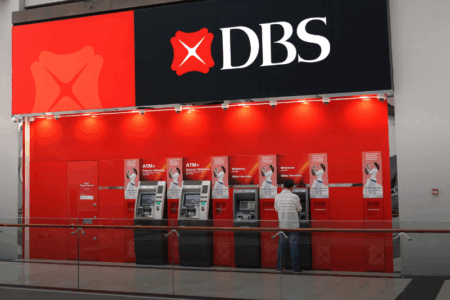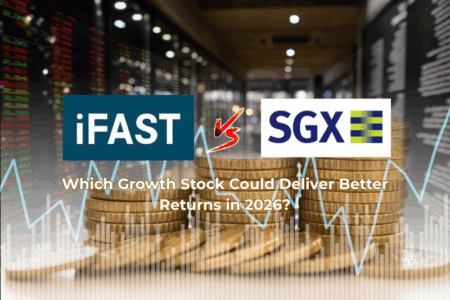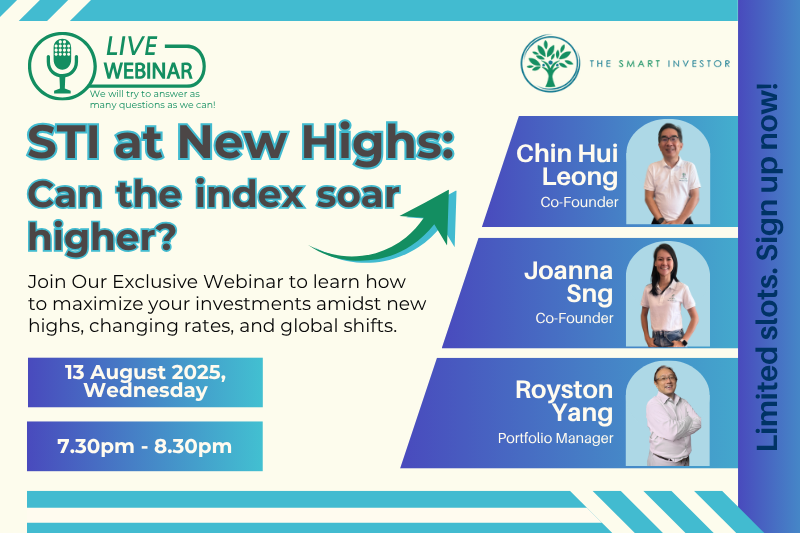Dividend investing isn’t just about grabbing the biggest payouts you see.
It’s about building an income stream that actually grows as your life moves forward.
A good dividend portfolio doesn’t get a case of the jitters when the market swings up or down. It keeps steady.
Whether you’re new to investing or fine-tuning things for retirement, these five rules set you up with a portfolio that goes the distance.
Rule #1: Focus on Dividend Growth, Not Just Yield
Big yields look tempting, but they usually mean more risk or payouts that will fizzle out down the road.
But what really matters is consistent dividend growth, built on real profits and strong cash flow.
Look at Singapore Exchange (SGX: S68).
Since it went public, it’s never skipped a payout.
In fact, it keeps bumping up its dividend from S$0.32 per share in the fiscal year ended 30 June 2022 (FY2022) to S$0.375 in FY2025.
That’s the kind of steady performance that investors appreciate.
Singapore Exchange’s earnings come mostly from recurring trading and data fees, so even when the markets cool off, the cash keeps coming in.
Parkway Life REIT (SGX: C2PU) also stands out for its consistency.
For every year since 2007, it has bumped up its core distributions without fail.
That’s the power of those long-term healthcare leases, which climb right alongside inflation.
For 3Q2025, the REIT bumped up its distribution per unit higher once more, raising it by 2.3% to S$0.1156, up from S$0.113 in the previous corresponding period.
Revenue grew 8.2% year on year to S$117.3 million, lifting net property income by 8.1% over the same period.
The gains were driven by new nursing home acquisitions in Japan and France, along with a slight appreciation of the Japanese yen.
These assets keep bringing in reliable rental income, which feeds those regular dividend hikes.
When companies grow their dividends year after year, shareholders benefit from compounding.
That’s real financial strength, and it’s how you build lasting wealth.
Rule #2: Prioritise Quality and Resilience
Quality companies with stable earnings form the backbone of any successful dividend portfolio.
They’ve got solid balance sheets, manageable debt, and steady cash coming in.
Take CapitaLand Integrated Commercial Trust (SGX: C38U).
By 3Q2025, the REIT kept its steady climb going, lifting net property income (NPI) 1.6% YoY to S$294.4 million, with its year-to-date NPI inching up to S$874.2 million.
In 3Q2025, CICT improved its occupancy rate to a strong 97.2%.
For distributions, in 1H 2025, the REIT bumped up its distribution by 3.5% YoY to S$0.0562.
CICT owns popular malls such as Plaza Singapura and Raffles City, so naturally, these locations attract big-name tenants, keeping rental income steady.
Now, check out Singapore Technologies Engineering (SGX: S63).
Even when the economy gets choppy, the conglomerate stands firm.
The dividend payouts don’t skip a beat.
In its latest earnings, ST Engineering reported a 9% YoY rise in its 9M2025 revenue to S$9.1 billion.
The board proposed a special dividend of S$0.05 per share, funded by cash proceeds from recent divestments.
This comes on top of the group’s projected S$0.18 dividend for 2025.
The group paid a total dividend of S$0.17 per share for FY2024, up from S$0.16 the year before, and continues to declare S$0.04 every quarter in 2025, keeping income consistent for long-term investors.
With business lines stretching across defense, aerospace, and infrastructure, the conglomerate has its fingers in multiple pies that keeps revenue coming in, quarter after quarter.
If you’re out there looking for resilient dividend stocks, watch for things like gearing ratios below 40%, strong interest coverage, and a track record of free cash flow.
These aren’t just numbers.
They show real financial muscle, and that’s what protects your dividends when the market turns rocky.
Rule #3: Diversify Across Sectors and Markets
If you invest all your money into REITs or the banking sector, you’re setting yourself up for a rough ride.
An interest rate hike, for example, can hit the entire REIT sector.
Just watch what happens when rates climb.
REITs like Frasers Centrepoint Trust (SGX: J69U) and CapitaLand Integrated Commercial Trust got impacted by higher borrowing costs.
Meanwhile, banks like DBS Group (SGX: D05) and OCBC (SGX: O39) actually benefit, as those same higher rates mean more generous lending margins and stronger net interest income.
So, what’s the best move?
Don’t load up in one spot.
Try spreading your money around.
Consider investing 40% in REITs, 30% in banks, and 20% in steady picks like consumer staples or utilities, and 10% in overseas stocks to get a taste of the global market.
That way, you’re not left exposed if one sector takes a hit.
Now your income draws from different wells: property rent, loan growth, and the reliable cash flow of companies people depend on every day.
If one sector stumbles, another often steps up.
That’s the real value of diversification.
It keeps your dividend stream steady, even as the economy shifts around you.
Rule #4: Reinvest Dividends to Boost Compounding
When you reinvest dividends, your money starts working for itself.
It’s a straightforward move, but it can really boost your portfolio and the cash you pocket each year.
Imagine this: you’re getting a 5% annual yield and you keep reinvesting those payouts.
Over 15 years, your yearly dividend can easily more than double, all without putting in extra cash.
That’s compounding in action, as each dividend buys you more shares, and those new shares keep throwing off even more dividends down the line.
Consider DBS Group, those who kept reinvesting their DBS dividends after the post-pandemic bounce in 2021 would’ve seen both their dividend income and their capital gains climb fast.
Payouts jumped from S$1.09 per share in 2021 to an annualised S$3.00 per share in 2025.
By rolling those dividends back into the stock, you’d now own more shares, and each of them would be paying out even higher dividends year after year.
Rule #5: Review Regularly but Avoid Overreacting
Dividend investing takes patience.
You don’t have to jump every time the market dips or a new policy rolls out.
The real challenge is tuning out the noise and focusing on company fundamentals, not wild price swings from one week to the next.
Check your portfolio once or twice a year and ask yourself: Did this company cut its dividend?
Are earnings or cash flow falling off?
Has the share price run way past what it’s actually worth?
These are the questions that keep you grounded.
Investors who stuck it out during periods of lower earnings watched dividends stablise once cash flows got stronger.
Singapore Telecommunications Limited (SGX: Z74), or Singtel, wrapped up the financial year ending 31 March 2024 (FY2024), with S$2.57 billion in free cash flow and S$3.2 billion in EBITDA.
Fast forward to May 2025, and the telco proposed a total FY2025 dividend of S$0.17, higher than FY2024’s S$0.15.
Checking in on your holdings helps you spot trouble early, but reacting with your gut rarely ends well.
Sell a quality dividend stock too quickly and you often miss the rebound, and the power of compounding over years.
What This Means for Investors
A strong dividend portfolio blends growth, quality, and a bit of discipline.
When you pick companies that regularly raise their payouts, keep their finances solid, and handle the market’s twists and turns, your income doesn’t just hold steady, it grows year after year.
Get Smart: Building Wealth That Lasts
The real secret to building lasting wealth isn’t chasing the highest yields.
It’s about building a portfolio that holds up over the long haul. Stick with your plan, reinvest your earnings, and give it time.
Those steady dividends really do pile up, turning into genuine wealth you can count on.
Don’t let market uncertainty hijack your financial dreams. While headlines scream gloom, 5 Singapore companies have been quietly building wealth and paying reliable dividends. You’re probably overlooking them. Discover these resilient giants and their secrets to sustained income, even through global storms. Click here to download your free report now and secure your financial future!
Follow us on Facebook, Instagram and Telegram for the latest investing news and analyses!
Disclosure: Joseph Gan does not own shares in any of the companies mentioned.





